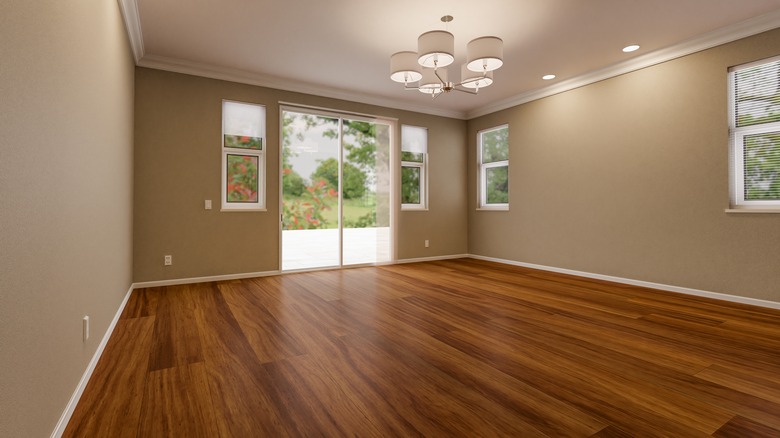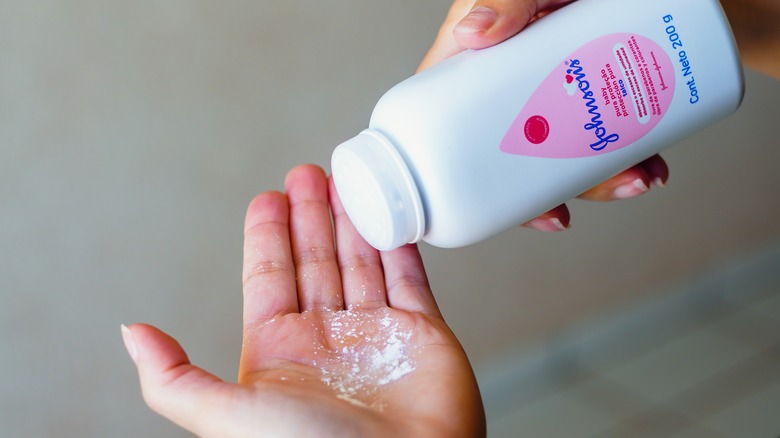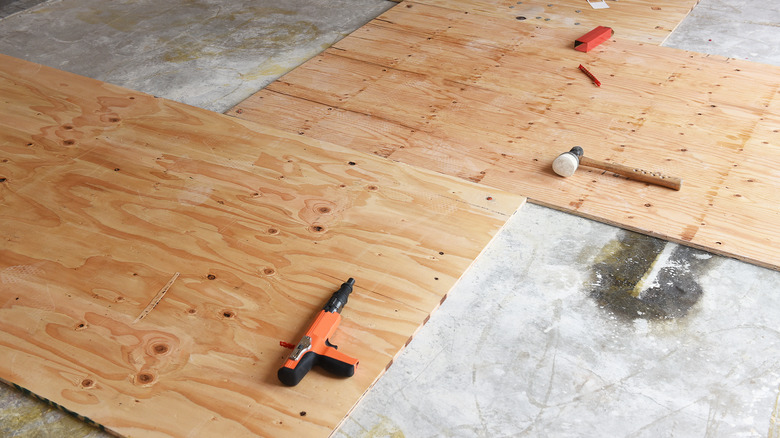The Baby Powder Hack That Can Help Fix Your Squeaky Floors
Wood floors are a beautiful, classic addition to any home, but with time, you may find yourself dealing with annoying creaks and squeaking every time you walk across your living room. According to The Home Depot, this noise is simply the result of age and movement. Wood is a natural material, and, over time, it retracts and expands with changes in humidity. As a result, sometimes floorboards and other structural elements rub against each other when pressure is applied, creating that grating, horror movie-esque noise.
Properly repairing squeaky floorboards often includes a more invasive look into the subfloor. It's a good idea to frequently check that your subfloor is properly supporting your flooring and not facing any rot or damage, but, often, a massive overhaul is too time-consuming and expensive to tackle immediately. If you want something to reduce the noise in the meantime, all you need to do is reach for one simple product that's likely already in your bathroom.
How to use baby powder to stop creaky floors
According to HGTV, a little baby powder is the perfect quick fix for squeaky floorboards. While normally used to prevent chafing and diaper rash, talc, also referred to as baby powder, can act as a lubricant to reduce noise between creaking boards.
To pull off this hack, all you need to do is sprinkle a small amount over the area of the floor that's producing noise — finding the troublesome board is as simple as walking around and listening for squeaks. Once found, work the baby powder into the cracks between the boards. Once you're satisfied, just clean off any residue on the boards by dusting or wiping down with a damp towel. If your problem is simply the result of two boards rubbing together, you'll be left with less noise. If you don't have baby powder on hand, you can also use baking soda or powdered graphite in the same way.
If the hack doesn't reduce floorboard noise
If this baby powder hack doesn't stop your squeaky floors, however, you may be dealing with a different issue. If one of your floorboards is loose or warped, inspect it from the floor below. Find where the loose board(s) is and secure it down with a wood screw. Make sure to stop about a 1/4-inch before you reach the surface — you don't want any screws poking through and presenting a sharp hazard as you walk around (via HGTV).
Alternatively, you may need to fill in gaps between the subfloor and joist to keep it from moving. Adding additional reinforcements in the form of steel bridging on the subfloor can also help create a more stable and quiet base. Unfortunately, if this layer is inaccessible or if you're having widespread issues, it might be time to call in a professional to fix your problem and replace your subfloor to prevent further damage.


